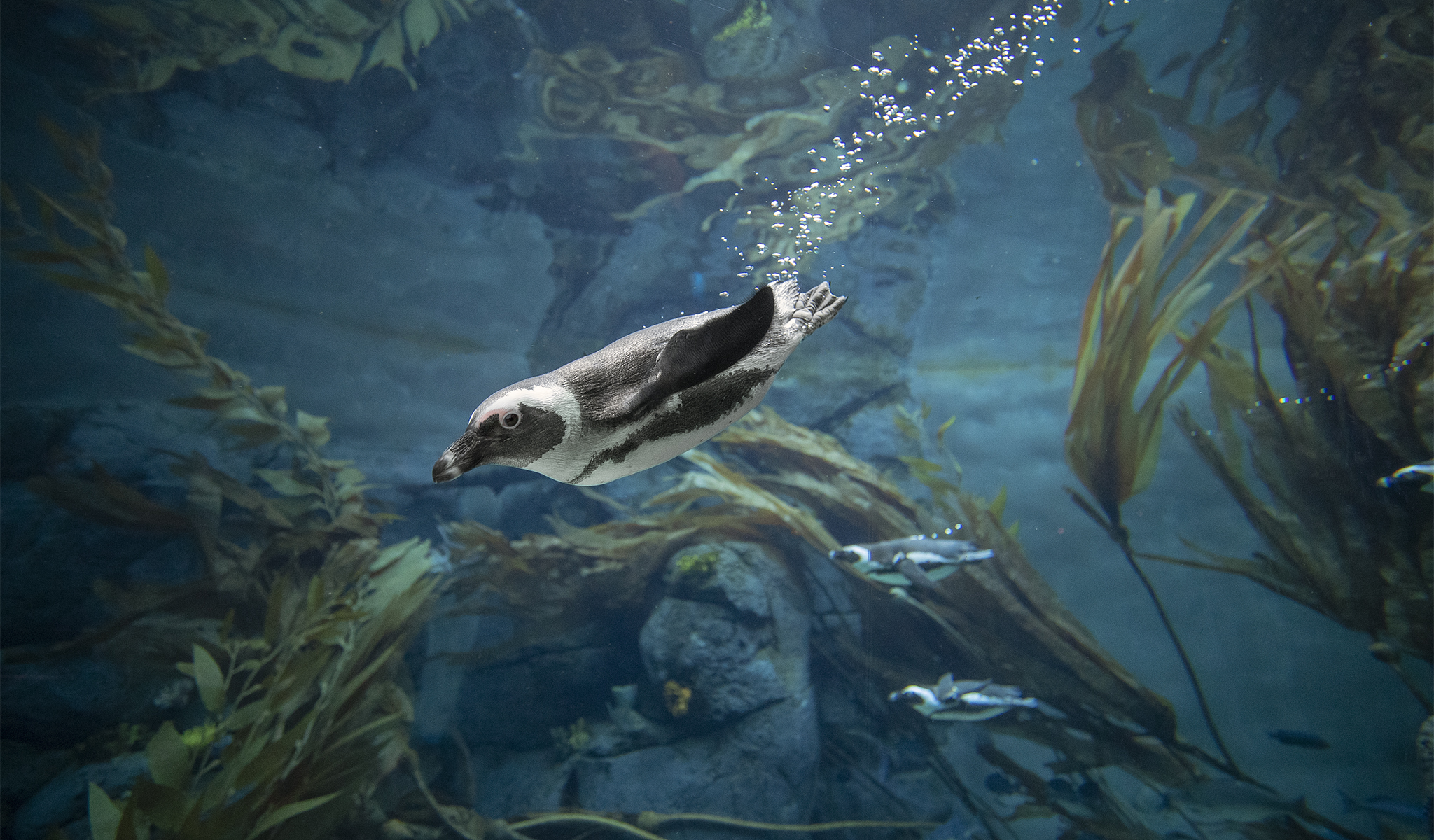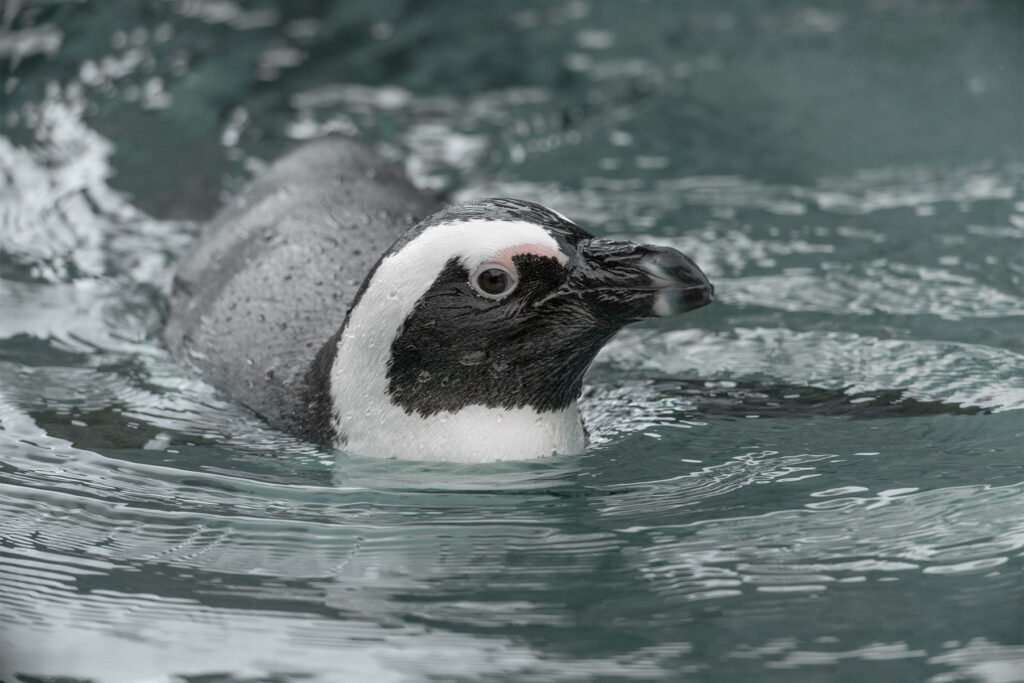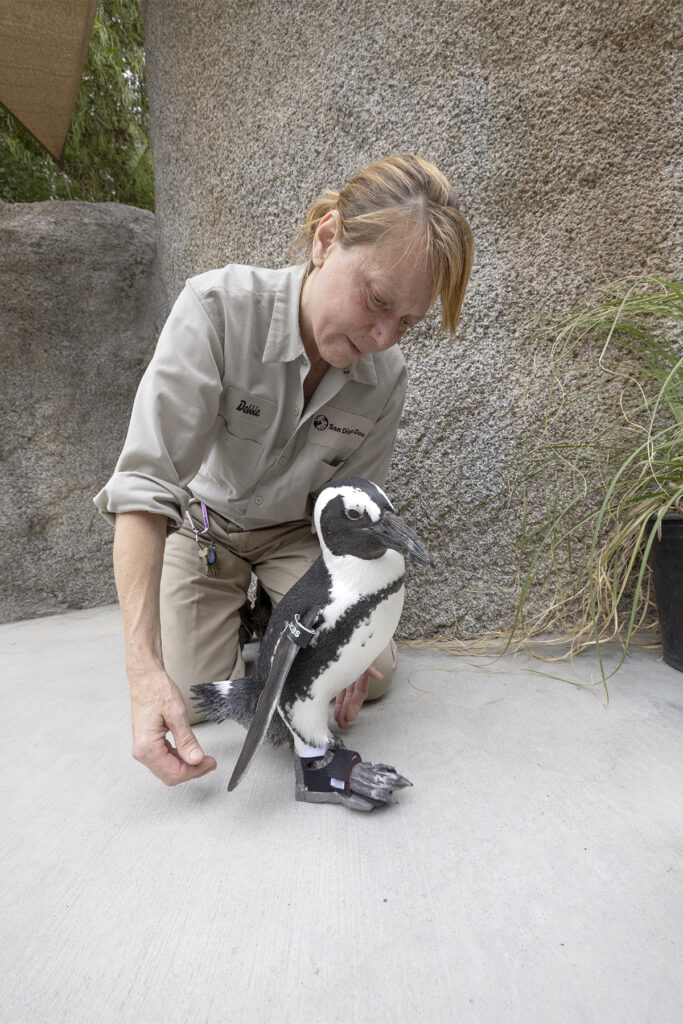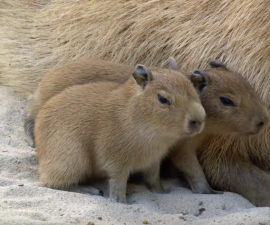BY Debbie Denton
Senior Wildlife Care Specialist at the San Diego Zoo
A Day in the Life with the Colony
Who doesn’t love a penguin? They’re cute and curious, and their antics can keep Zoo guests interested and engaged for hours. Penguins are colonial birds, meaning that they seek safety in a crowd, so that’s why you’ll see large numbers of them living or swimming together. Even though the 25 African penguins at the San Diego Zoo’s Dan and Vi McKinney Penguin Habitat at Africa Rocks usually gather in a big group, they each possess distinct personalities, and we treat them as individuals. A big part of our wildlife care specialists’ daily responsibilities is ensuring that each penguin stays healthy—and to do this, we must be familiar with what normal behavior is for each bird in the colony.
Food for Thought
Penguins are predators (they hunt fish), but they are also prey. They will mask illness, acting as if nothing is wrong when they are sick, to avoid becoming an easy meal themselves. This makes our job challenging, because a healthy-looking bird could actually be ailing. Subtle changes in behavior and appetite can indicate they need medical attention.
Each day, we start with a walkthrough of the penguins’ habitat, noting where each bird is resting and where they might have spent the night. Are they with their mate, or are they with a new member of the flock? Are they alone and away from the group? How do the penguins respond to wildlife care specialists’ presence? Each of these questions is important for us to consider; and what is normal for one penguin can be something that is abnormal for another.
The most important part of the day for wildlife care specialists is feeding time. Hand-feeding our flock gives us a chance to evaluate each of our penguins up close, and gives us the opportunity to check the brightness of their eyes, the pinkness of their dermal patches, and the condition of their feathers. We can see the inside of their mouth when they reach for a fish, and observe their gait as they walk toward the bucket. We’ll evaluate their appetites, and how eager they are for food. We count every fish that each bird is offered, so we can determine the appetite and feeding routine for each penguin. Appetites will fluctuate with the seasons. Hungry birds preparing for molt will eat just about anything offered to them, but if there’s a very hungry bird who isn’t putting on weight, something may be wrong.
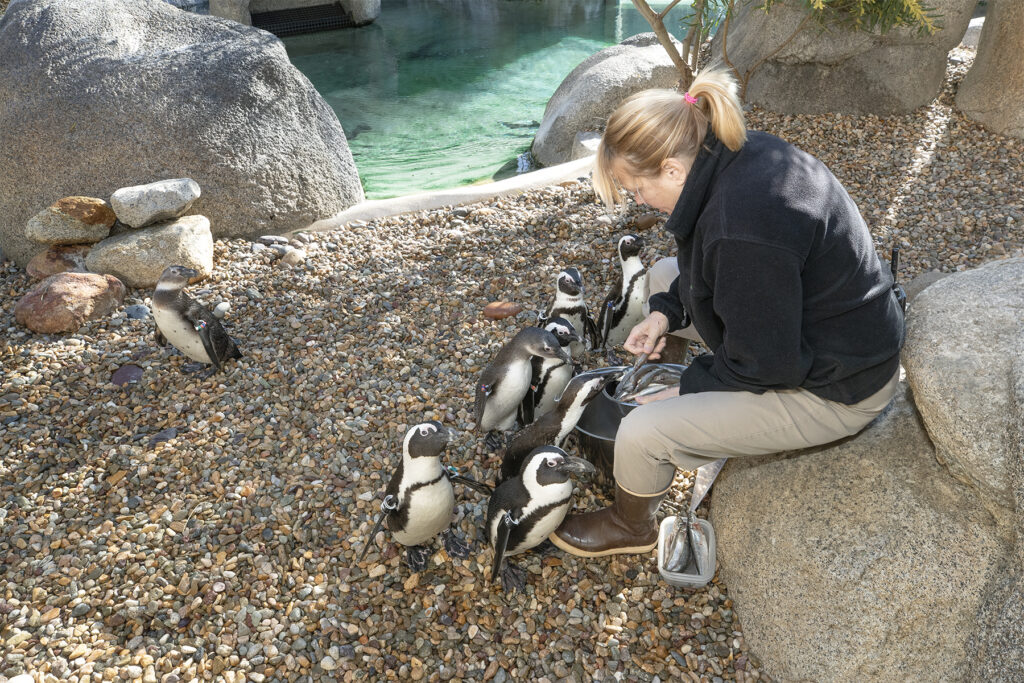
Along with our morning observations of physical activity and food drive, we’ll note whether an animal is acting normally, or if something is different and a vet exam might be necessary. But what do we see that could tell us a penguin is not at their best? And what could possibly be bothering them?
An Abundance of Caution
People in North America don’t normally think much about malaria, but as penguin care specialists, it’s something we consider every day. Avian malaria can be transmitted through a mosquito bite, and although humans can’t contract this particular type of malaria, it can be serious for penguins, which are highly susceptible. We do our best to eliminate standing water where mosquitoes can breed, and surround the habitat with insect-repelling plants.
We administer medication to the colony every other day to prevent them from contracting malaria, but it’s not 100-percent foolproof— we’ll still get cases in our penguins. Some cases are acute—it can be fatal within 24 hours of being bitten—so, if we believe that one of our penguins isn’t feeling well, we’ll get a blood sample to screen for the parasite. We’re very successful at treating our malaria cases to a full recovery with medications, fluid therapy, and TLC—but the parasite can stay in their system for years, and something as stressful as a molt can activate the parasite again, even if the bird hasn’t recently been bitten.
Steps to Prevent Bumblefoot
Penguins spend most of their life at sea, so their bodies aren’t built to stand for long periods of time. We do all we can to encourage our birds to swim, but we know they will be standing more than they would in their native ranges. We offer engaging opportunities for active swimming and diving, but penguins also choose to stand on the beach. Our cobble beach was a conscious decision in the habitat; its irregular surface distributes weight across their feet every time they take a step, and this is vital to their overall health. Standing on a flat surface for extended periods of time can cause pressure sores to form on their footpads and toes: a condition called “bumblefoot.” Bumblefoot is a common problem across penguin populations, and can be treated in a variety of ways. Foot cream, pain medication, laser therapy, and even custom-made shoes have helped alleviate the discomfort associated with the condition.
Alleviating Aspergillosis, and Preventative Care
If we hear one of our penguins coughing or sneezing, we know it’s not a common cold like we might get. It could be an indication of a fungal respiratory infection called aspergillosis. This spore is abundant in the environment and is usually noninvasive.
We do our best to ensure each of our birds stays healthy throughout the year. Each spring, we gather the entire colony to be checked by our veterinarians. They administer a vaccine booster to everyone to prevent West Nile virus, another mosquito borne illness. We check their weights and collect a small blood sample from their foot to screen for avian malaria.
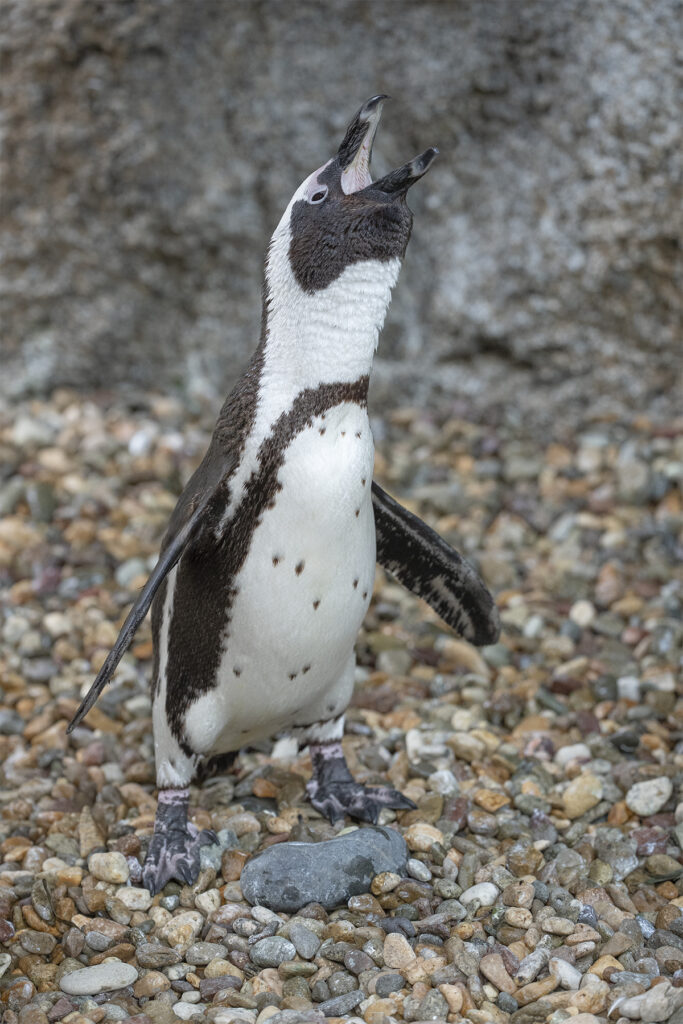
Ten pre-selected birds will be transported to the hospital for a preventative medical exam, or PME. This detailed exam includes a CT scan. We can evaluate any changes to their bones or overall skeleton. The veterinarians will also take a close look at the condition of their eyes, to detect any abnormalities or the beginning of cataracts; and will test flexibility in their joints to see if they still have the full range of motion. Finally, we take a picture of the bottoms of both feet, to see if there has been any change to their footpads. With a clean bill of health, the birds will pass their physical and will get their next PME again in three years.
Just as you provide daily care to keep your family healthy, we are taking the necessary steps each day to keep our active colony of penguins healthy, too!
Discover more about what your support makes possible for African penguins and other unique marine wildlife through our Oceans Conservation Hub.

